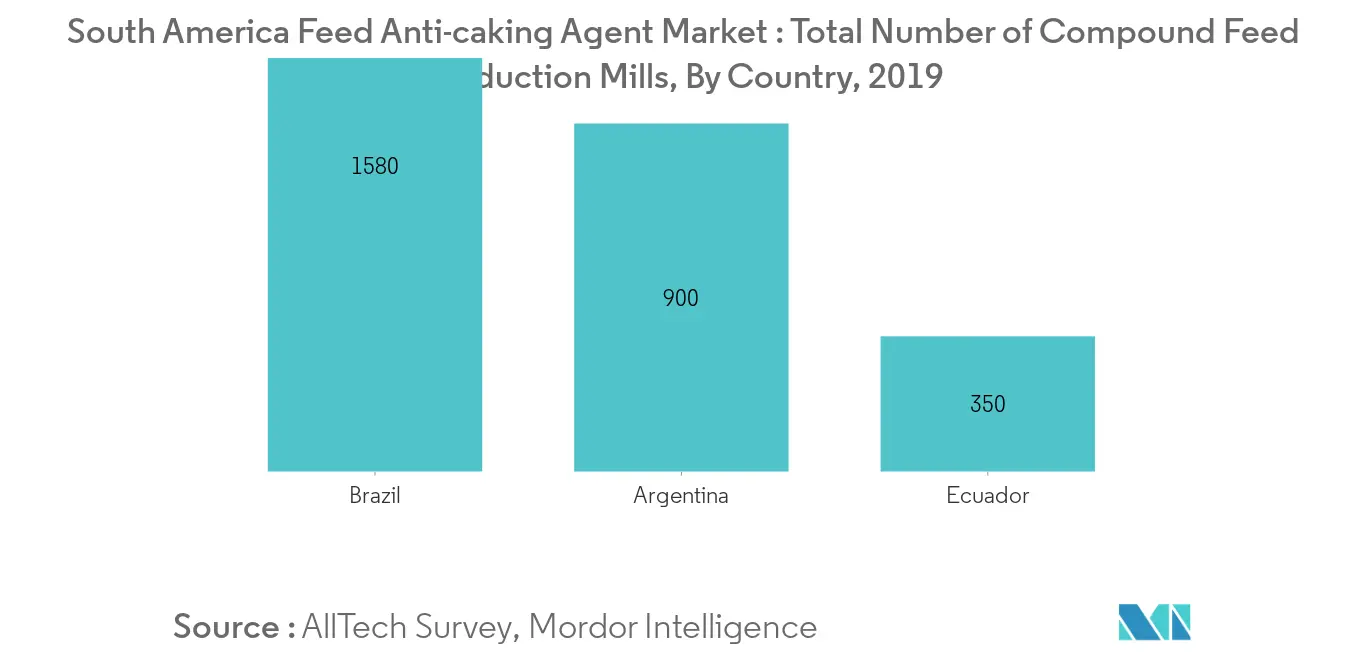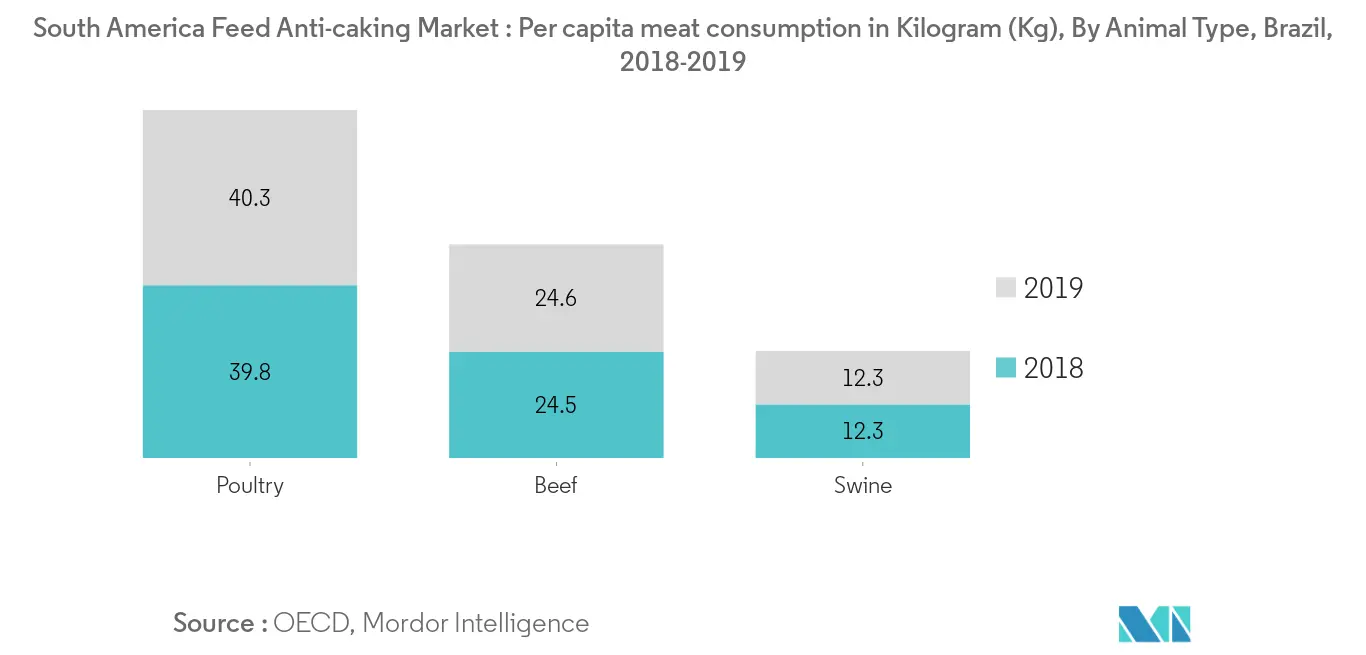Market Trends of South America Feed Anti-Caking Agents Industry
This section covers the major market trends shaping the South America Feed Anti-Caking Agents Market according to our research experts:
Expansion of Compound Feed Industry
According to the AllTech feed survey in the year 2019, Brazil which is one of the largest feed producers accounts for more than 60% of the market share in the region. The Brazil market for feed is driven by the rise of meat consumption and exports in the country and the growing awareness regarding meat quality. The industrialization of meat production is also fueling the demand for animal feed anti-caking agents in the country. These factors are driving the market for anti-caking agents. The market is expected to grow with increasing investments from domestic and foreign players. The entry of key foreign players has given a boost to the market. But the rising costs of raw materials are hindering the growth of the market in the region. As the livestock industry registered a low growth rate, there is an increasing need for animal feed. This is expected to drive the demand for feed additives, particularly feed anti-caking agents. Moreover, silicates are widely used as anti-caking agents, as silicates can absorb, both, water and oil. Sodium and calcium products, such as sodium ferrocyanide and tricalcium phosphate are witnessing high demand, as they reduce individual adhesion of feed.

Increased Meat Consumption Among Consumer
The increased consumption of livestock products like Milk, Egg, and Meat has led to increased production of livestock which has led to increased demand of quality compound feed. According to the Organisation for Economic Co-ordination and Development (OECD), the per capita poultry meat consumption in Brazil was 39.81 kg, swine consumption was 12.33 kg and beef consumption was 24.47 kg in the year 2018. Poultry meat is the most consumed by humans with higher per capita consumption in the region. According to the Food and Agriculture Organization, the poultry population in 2016 was 2521754 thousand heads and increased to 2684758 thousand heads in the year 2018 whereas the ruminants population was 85703185 heads in 2016 and increased to 87284331 heads in 2018 in South America. Poultry market is growing by 10% each year and is focused on exporting as the cost of chicken meat produced in Argentina is one of the cheapest in the world. Hence all these factors together contribute towards the growth of the industry in the region studied during the forecast period.


